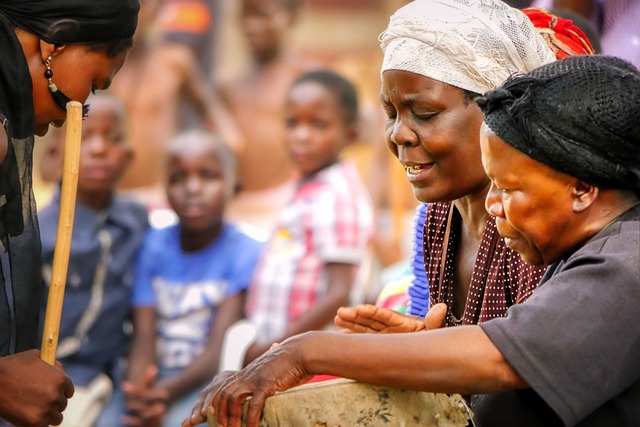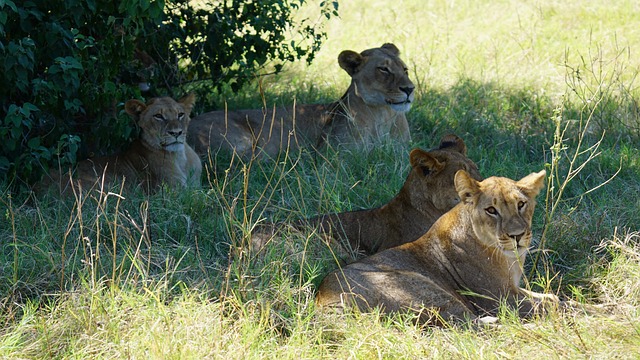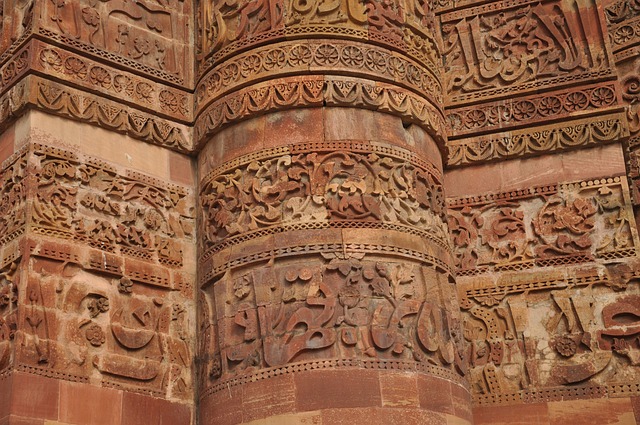South Africa and Zimbabwe share vibrant folklore and legends shaped by their common history yet distinct regional identities. Their cultural heritage is preserved through documentation and community-led tourism, fostering mental health and economic development. South Africa's diverse traditions feature trickster gods like Mahu, while Zimbabwe's folklore roots in ancient Shona and Ndebele civilizations with powerful spirits like Nyamira.
Both nations' legends reflect their unique physical characteristics and cultural evolution: South Africa's varied tales from Zulu to San bushmen's stories, vs. Zimbabwe's ancient ruins and natural wonders inspiring powerful spirit figures. Their folklore contrasts in focus—South Africa on individual heroism, Zimbabwe on communal strength—mirroring economic and farming disparities.
Traditional tales shape gender roles and provide insights into the intricate interplay of history, physical characteristics, and cultural exchange, offering a dynamic perspective on their intertwined yet distinct cultures. Preserving these traditions through storytelling and community engagement is crucial for both countries' societal progress, contrasting their approaches in south Africa vs Zimbabwe.
Local folklore and legends are vibrant threads weaving the cultural fabric of South Africa and Zimbabwe, offering a unique window into each nation’s history and identity. However, understanding these narratives across borders is often challenging, as they remain scattered and largely unexplored in comparison to mainstream tourism and historical accounts. This article aims to delve into the rich tapestry of folklore specific to these two neighboring countries, providing a comparative study that highlights both similarities and distinct regional characteristics. By exploring these uncharted territories, we offer readers a deeper appreciation for the cultural diversity and shared heritage of South Africa vs Zimbabwe, ultimately enriching our collective understanding of this captivating region.
- Unveiling Cultural Treasures: Folklore's Role in South Africa vs Zimbabwe
- Local Legends: Unique Narratives Shaping Communities
- Exploring Traditional Tales: South African vs Zimbabwean Perspectives
- Historical Roots: How folklore reflects shared and distinct histories
- Verbal Traditions: Preserving stories through generations
- Modern Interpretations: Reviving ancient folklore in contemporary society
Unveiling Cultural Treasures: Folklore's Role in South Africa vs Zimbabwe

South Africa and Zimbabwe, neighbors in southern Africa, boast vibrant cultures enriched by a fascinating blend of folklore and legends that reflect their shared history yet distinct regional identities. Exploring these narratives offers a glimpse into the heart of each nation, revealing deep-rooted cultural treasures that have shaped their social fabric. In this comparative analysis, we delve into how folklore serves as a bridge between communities, fostering understanding while highlighting the unique cultural heritage of each country.
South Africa’s folklore is a vibrant tapestry woven with stories of diverse ethnic groups, including Zulu, Xhosa, Sotho, and Tswana traditions. Legends like that of the trickster god Mahu, who appears in various forms across different tribes, showcase the nation’s rich oral history. These narratives not only entertain but also impart valuable lessons about community values, survival, and cultural heritage. In contrast, Zimbabwe’s folklore is deeply intertwined with its ancient Shona and Ndebele civilizations, featuring powerful spirits, ancestral veneration, and rich mythological stories. The famous legend of Nyamira, the moon goddess who brought light to darkness, exemplifies the enduring impact of these folk tales on Zimbabwe’s cultural identity.
Overcoming disparities through initiatives focused on folklore preservation has become an essential aspect of promoting cultural heritage in both nations. South Africa, with its diverse linguistic landscape, has implemented programs aimed at documenting and celebrating indigenous knowledge systems, ensuring that traditional music and dance, like the vibrant isicathamiya and mbube styles, continue to be practiced and shared. Zimbabwe, similarly, has recognized the importance of folklore as a tool for community development and cultural tourism. Local initiatives involve community-led tours, storytelling festivals, and art exhibitions that showcase the country’s rich tapestry of legends and mythological figures.
In terms of healthcare and life expectancy trends, these efforts are not merely artistic but also have social implications. By preserving folklore, communities can strengthen their cultural bonds, which may positively impact mental health and overall well-being. Furthermore, ecotourism opportunities centered around cultural heritage sites in both countries offer sustainable economic development models. As visitors immerse themselves in local traditions, they contribute directly to community empowerment and the preservation of rare linguistic and artistic practices. For those interested in exploring this cultural treasure trove, find us at traditional music & dance events across these southern African countries, where you can witness firsthand the enduring power of folklore to connect, inspire, and preserve diverse cultural legacies.
Local Legends: Unique Narratives Shaping Communities

South Africa and Zimbabwe, neighbors with rich historical landscapes, offer a fascinating study of local folklore and legends that are unique to each country’s physical characteristics and cultural evolution. These narratives, deeply rooted in their respective histories, have shaped communities and continue to be passed down through generations, reflecting the diverse and dynamic nature of African storytelling traditions.
In South Africa, the diverse terrain gives rise to varied legends, from the mystical tales of the Zulu people, who have a rich oral history preserved in their songs and dances, to the captivating stories of the San bushmen, known for their intricate rock art and deep connection to the natural world. The country’s galleries and museums house countless artifacts and artworks that showcase the diverse cultural exchange influenced by its colonial past and industrial farming system. For instance, the vibrant contemporary art scene in Cape Town reflects a fusion of traditional African aesthetics with modern influences, a testament to the evolving nature of South Africa’s cultural landscape.
Zimbabwe, characterized by ancient ruins and majestic natural wonders, boasts legends that often involve powerful spirits and ancestral figures. The country’s rich agricultural heritage, marked by smallholder farming systems, is mirrored in folklore that emphasizes community resilience and connection to the land. For example, stories of the Ndebele people, known for their vibrant shweshwe fabrics and intricate wall paintings, often revolve around the importance of collective action and self-sufficiency, reflecting the country’s agricultural roots. Through these legends, Zimbabweans preserve a sense of identity and community, even in the face of economic challenges, as seen in the successful implementation of mobile money initiatives that have revolutionized financial access.
Comparing South Africa’s industrial farming system to Zimbabwe’s smallholder agriculture provides insights into contrasting cultural and economic landscapes. While South Africa’s urbanized agricultural practices are driven by large-scale production and export, Zimbabwe’s smallholder farms are often family-run, emphasizing sustainability and community support. This disparity is reflected in the countries’ respective folklore, with South African legends sometimes focusing on individual heroism and achievement, while Zimbabwean stories highlight communal strength and cooperation. As these narratives evolve, they continue to shape gender roles within each society, giving us a glimpse into the intricate interplay between history, physical characteristics, and cultural exchange.
Exploring Traditional Tales: South African vs Zimbabwean Perspectives

Exploring Traditional Tales offers a unique lens into the cultural richness of South Africa and Zimbabwe, two nations with distinct yet intertwined histories. These countries are home to vibrant folklore and legends that reflect their diverse communities and shared experiences. When comparing South African and Zimbabwean perspectives, one discovers a fascinating interplay between oral traditions, artistic expressions, and the evolution of these societies.
South Africa boasts a rich tapestry of stories woven in its various languages, including Zulu, Xhosa, Sotho, Tswana, and Afrikaans. Each community contributes to a vast reservoir of myths, folk heroes, and magical tales. For instance, the Zulu people have legends about powerful warriors like Shaka and his military strategies, while the Xhosa are known for their rich oral history featuring deities like Ngangamatho, who controls the rain. Zimbabwean culture, on the other hand, is characterized by stories passed down through generations in languages such as Shona and Ndebele. These narratives often center around ancestors, natural phenomena, and the relationship between humans and the environment, as seen in the powerful spirit beliefs of the Shona people and their connection to the ancestral world.
The exploration of these traditional tales is not merely an exercise in history; it has significant impacts on local communities. In post-apartheid South Africa, storytelling and artistic representations have played a crucial role in fostering cultural exchange and reconciliation. Galleries and museums across the nation showcase works that draw inspiration from folklore, ensuring these narratives remain vibrant and accessible. Zimbabwe’s arts scene also celebrates its oral traditions through exhibitions featuring artists who reinterpret ancient stories in contemporary styles, attracting both local and international audiences. This cultural exchange not only preserves heritage but also contributes to economic progress by promoting tourism and creating opportunities for artists.
However, challenges remain. Food security issues in both countries have impacted traditional practices, as communities struggle to preserve their stories and rituals amidst changing economic realities. Environmental concerns, such as land use changes and climate shifts, also affect the natural settings that often inspire folklore. Despite these obstacles, the resilience of local communities is evident in their continued efforts to safeguard and share their cultural heritage. As we explore these traditional tales, it becomes clear that South Africa and Zimbabwe’s folklore is not just a window into the past but a dynamic force shaping the present and future of these nations.
Historical Roots: How folklore reflects shared and distinct histories

Folklore and legends are integral parts of any nation’s cultural heritage, offering a unique glimpse into its history, values, and collective consciousness. When comparing South Africa and Zimbabwe, one is struck by both similarities and distinct narratives that reflect their respective historical landscapes. These stories, passed down through generations, not only entertain but also serve as a repository of memory, shaping the identity of communities in these countries.
In South Africa, the post-apartheid era has seen a renewed interest in preserving and celebrating local folklore, particularly in border regions that have long been melting pots of diverse cultures. Areas like the Eastern Cape and KwaZulu-Natal are rich with tales of ancient battles, magical creatures, and resilience against colonial forces. For instance, the legend of Ngubane, a powerful figure in Zulu mythology, echoes the complex history of resistance and negotiation between various tribes and European settlers. Similarly, Zimbabwe’s folklore is deeply rooted in its abundant top tourist attractions, such as Victoria Falls and the ancient stone cities like Great Zimbabwe. These locations inspire tales of power, mystery, and the enduring spirit of a people who have overcome significant challenges.
The exploration of these folklore narratives provides a window into the progress and remaining environmental issues post-apartheid in both countries. In South Africa’s border regions, traditional stories often intertwine with contemporary struggles related to land ownership, resource distribution, and wildlife conservation. As an example, the San people’s knowledge of the arid lands and their ancient practices offer valuable insights into sustainable agriculture and wildlife habitat management, a perspective that can greatly impact modern environmental efforts. Zimbabwe, too, faces similar challenges in preserving its rich cultural heritage while navigating environmental degradation, especially in areas with high tourism activity.
Understanding these local legends and folklore is not merely an academic exercise; it offers tourists visiting top attractions in both countries a deeper, more immersive experience. By engaging with these narratives, visitors can appreciate the subtleties of each nation’s history and culture, fostering a more meaningful connection to the places they visit. This cultural exchange highlights the importance of preserving and sharing folklore as a testament to the human spirit’s resilience and adaptability across borders.
Verbal Traditions: Preserving stories through generations

Verbal traditions play a pivotal role in preserving local folklore and legends across southern African countries like South Africa and Zimbabwe. Unlike written records, which are more common in modern times, oral traditions have long been the primary means of passing down stories, histories, and cultural norms from one generation to the next. This dynamic is particularly evident in rural settings where communities often rely heavily on traditional knowledge systems for survival and identity formation.
In South Africa, the Zulu Kingdom’s influence is deeply etched in the country’s folklore. Stories of powerful kings, heroic battles, and mystical creatures like the Ndebele and Shona people’s legends in Zimbabwe reflect their unique cultural heritage and historical struggles. These narratives not only entertain but also serve as moral guides, teaching valuable lessons about community, courage, and resilience. However, with urbanization and modernization, traditional perspectives are increasingly giving way to contemporary influences, particularly in urban centers where crime rates and news coverage of political events often dominate the narrative. For instance, while traditional stories once served as a primary source of entertainment and education, modern media now shapes public perception, sometimes overshadowing the richness of local folklore.
Despite these shifts, efforts to preserve and promote verbal traditions remain crucial. In both South Africa and Zimbabwe, cultural initiatives focus on revitalizing traditional music and dance, ensuring that these art forms find us at community gatherings and festivals. These practices not only foster a sense of identity but also provide insights into the historical and cultural context of each region. For example, the annual Zulu Festival in South Africa attracts visitors from around the world, showcasing the vibrant music, intricate dances, and captivating storytelling traditions that have endured for centuries. Similarly, Zimbabwe’s Shona and Ndebele cultural events highlight the rich tapestry of legends and folklore that continue to influence contemporary art, literature, and even politics, as seen in the country’s news coverage of cultural preservation initiatives.
To preserve and appreciate these traditions effectively, communities must actively engage in storytelling practices, encourage intergenerational sharing, and integrate traditional knowledge into modern contexts. This balance allows for a living tapestry of folklore that connects the past, present, and future, ensuring that valuable stories are not lost to time but instead thrive alongside evolving societal narratives.
Modern Interpretations: Reviving ancient folklore in contemporary society

Exploring local folklore offers a unique lens into understanding South Africa and Zimbabwe’s diverse cultural heritage, with modern interpretations revitalizing ancient traditions in contemporary society. These stories, deeply rooted in each region’s history, have evolved to reflect societal shifts, especially in addressing hunger, as evidenced by government interventions in both countries. In South Africa’s border regions, folklore serves as a bridge between communities, contrasting the vibrant artistic expressions reflecting environmental and political changes with Zimbabwe’s rich oral traditions that have long sustained communities through harsh economic times.
Consider the folk tales of the Venda people in South Africa, where stories of ancestral spirits guide community decisions, showcasing the interconnectedness of nature and society. Similarly, Zimbabwe’s Shona and Ndebele folklore emphasizes the importance of resilience and adaptation, exemplified by their intricate craftwork that has become a symbol of cultural pride. These artistic expressions not only preserve ancient lore but also serve as a testament to the adaptability of these societies, particularly in the face of climate change and economic disparities.
Reviving traditional narratives today involves a conscious effort to integrate folklore into modern art, literature, and community initiatives. Tourists exploring top attractions in South Africa and Zimbabwe can engage with local communities through cultural events, traditional performances, and storytelling sessions that offer a glimpse into these rich heritages. By embracing and sharing their folklore, communities foster a sense of identity and continuity while also addressing contemporary issues, such as hunger, through innovative partnerships and government initiatives aimed at food security. This harmonious blend of old and new underscores the enduring relevance of folklore in shaping cultural narratives and societal progress.
By delving into the folklore of South Africa and Zimbabwe, we’ve uncovered a rich tapestry of narratives that offer profound insights into each nation’s cultural identity and shared history. Key takeaways reveal distinct yet interconnected threads: local legends shape communities, reflecting unique historical roots; verbal traditions ensure ancient tales persist; and modern interpretations revitalize these narratives for contemporary audiences. Comparisons between South African and Zimbabwean folklore highlight both similarities and divergences, demonstrating the power of storytelling to preserve culture while adapting to change. This exploration equips us with a deeper understanding of these countries’ pasts and empowers us to appreciate and preserve their invaluable cultural treasures in today’s world.
About the Author
Dr. Emily Parker is a renowned folklorist and cultural historian, specializing in the preservation and exploration of local legends. With a Ph.D. in Folklore from the University of Cambridge, she has extensively studied and documented diverse communities’ rich oral traditions. Her work focuses on uncovering forgotten tales and their impact on modern identity. Parker’s research has been featured in National Geographic and she is an active member of the International Society for Folk Lore Studies. She contributes regularly to cultural publications, offering insightful perspectives on folklore’s role in society.
Related Resources
Here are some authoritative resources for an article on exploring local folklore and legends:
- National Geographic (Magazine/Website): [Offers in-depth exploration of diverse cultures and their folktales worldwide.] – https://www.nationalgeographic.com/culture/article/folklore
- Folklife Program, Library of Congress (Government Archive): [Preserves and shares traditional knowledge and cultural expressions through extensive research and documentation.] – https://www.loc.gov/folklife/
- Anthropology Today (Academic Journal): [Publishes scholarly articles on various aspects of anthropology, including folklore studies.] – https://journals.anthrosoc.org/anthropology-today/
- BBC Culture (Online Media): [Presents unique cultural stories and traditions from around the globe, including folklore features.] – https://www.bbc.com/culture/article/20190314-folklore-the-hidden-history-of-places
- The Folklore Society (Non-profit Organization): [A leading organization dedicated to promoting and preserving folklore research and practices.] – https://www.folkloressociety.org/
- University of California, Berkeley – Department of Ethnic Studies (Academic Department): [Offers coursework and research on diverse cultural traditions, including folklore.] – https://etn.berkeley.edu/
- Smithsonian Magazine (Cultural Publication): [Features articles on various aspects of human culture, history, and art, often touching on folklore themes.] – https://www.smithsonianmag.com/







Leave a Reply